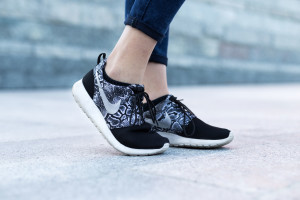
There are many conditions which cause pain in the bottom of the foot. Foot pain can be a debilitating condition, preventing patients from activity. Yet, its importance is often overlooked. In this article, we will link the different types of foot pain to a common mechanical fault which can be corrected.
First, know that your foot is one of the most complicated set of joints in the body. It has two very distinct functions:
- To adapt to the ground below you by becoming a pliable “loose bag of bones.”
- To become a rigid lever with which to push off of the ground and propel yourself forward.
Note: It’s been said that a true measure of athleticism can be determined by how well you’re able to use the ground, and a lot of that is determined by how well your foot can transition from these two distinct functions.

A normal foot has just the right amount of pronation (arch dropping, creating pliability) and supination (arch forming, creating a rigid lever). In this way, the arch and its corresponding soft-tissues act like brakes and shock absorbers to help buffer the forces of your body weight above meeting the solid ground below.
Overpronation is the most common biomechanical flaw leading to pain at the bottom of your foot. Your foot is constantly under dynamic (e.g. running/walking) and static (e.g. standing) loads while in contact with the ground. This constant load and the fight against gravity can break down the soft-tissues which make up the arch of your foot, leading to flat-feet and overpronation. Once this occurs it’s like driving a car without shocks or brakes. You’re now in for a bumpy ride!
Overpronation is linked to these conditions at the bottom of your foot:
- Plantar fasciitis- the most common condition causing pain at the bottom of your foot, primarily by your heel and into the arch.
- Metatarsalgia – presenting with pain mostly in the forefoot.
- Nerve Irritation and entrapments:
- Morton’s Neuroma- nerve pain at the metatarsals
- Baxter’s Neuritis – nerve pain which can mimic plantar fasciitis
- Tarsal Tunnel – pain which can also extend to the bottom of the foot
- Small arch pain – pain by the small arch from the outside portion of your heel, to the base of the 5th metatarsal.
- Retrocalcaneal bursitis – causing heel pain
- Stress fracture – pain at the site of involvement
- Bunion- pain and deformity at the base of the big toe
Note: Overpronation is also linked to problems above the foot such as: Achilles tendon pain, shin splints, runner’s knee, IT-band syndrome, ACL sprains, MCL sprain, hip pain, and even lower back pain.

Visual signs which mean that you may be overpronating:
- Your arch bottoms out when you stand
- Your Achilles tendon bows in
- You flare your foot out
- If you lunge or squat, your knee tends to migrate toward the midline of your body.
Other risk factors for developing pain at the bottom of your foot include:
- Being above your ideal weight
- Occupations which require a lot of standing: teachers, nurses, restaurant staff
- Sports which require a lot of running
- Improperly fitting shoes
- Oversupination – characterized by a rigid arch and walking on the outside edge of the foot
Overpronation can be corrected by a custom orthotic, a combination of corrective exercises, and soft-tissue work to address the dysfunction of the weakened tissues involved.
If you think you might be overpronating, let us know, we can help.
©CenterForMusculoskeletalFunction2017



